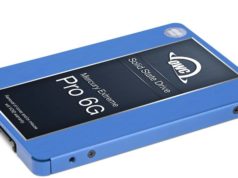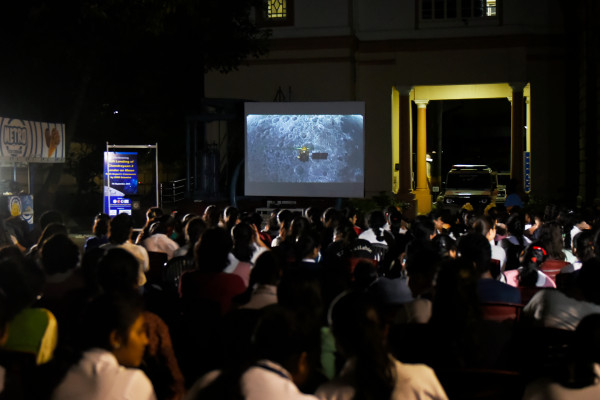
Boeing recently unveiled the spacesuit passengers will wear aboard Boeing’s Starliner spacecraft, a next-generation space capsule that will take people to and from low-Earth orbit, including missions to the International Space Station.
According to NASA, the design is lighter and more comfortable than the spacesuits earlier astronauts wore.
Contrary to schoolhouse rumor, you will not explode if you enter space without a suit, nor will your blood boil. You won’t freeze to death either, because the lack of oxygen will kill you first. Here’s a look back at the suits that keep brave space explorers alive in challenging circumstances and how they’ve changed from mission to mission.
Boeing

Initiated in 1958, completed in 1963, Project Mercury was the United States’ first man-in-space program.
Here, Gordon Cooper, one of NASA’s original seven astronauts, poses in his Mercury flight suit.
A modified version of a U.S. Navy high-altitude pressure suit, it had an inner layer of Neoprene-coated nylon and an outer layer of aluminized nylon.
NASA

Soviet cosmonaut Yuri Gagarin wore a SK-1 pressure suit on April 12, 1961, when he became the first human to journey into space.
Notable features include a visored helmet that is not detachable from the suit; the inflatable rubber collar for use in the event of water landing; the bright orange nylon oversuit, which has a mirror sewn into the sleeve to help the cosmonaut locate hard-to-see switches and gauges; and the gray-checked pressure liner with connectors for life-support and communications hoses. The suit also has leather-palm gloves, heavy leather boots, and a leather-covered radio headset.
The suit at right, worn by Gagarin during training exercises, is now on display at the Smithsonian National Air and Space Museum.
Lehtikuva / AP file; Smithsonian

Astronaut John Glenn wears a training version of a Mercury spacesuit during a break from training for the Mercury-Atlas 6 mission in 1962, when Glenn became the first American to orbit the Earth.
Like the Gagarin suit, its design was adapted from high-altitude pressure suits worn by aircraft pilots. Glenn’s suit was a lightweight multi-layered garment with an aluminized nylon cover layer. Thirteen zippers, plus custom-fitted gloves, boots, and helmet, assured a snug fit.
Glenn is the only astronaut to fly into space in a Mercury suit and a space shuttle suit. At At the age of 77, he became the oldest man to fly into space in 1998 when he joined the space shuttle Discovery mission.
AP

Future moonwalker Neil Armstrong poses in his Gemini G-2C training suit. Unlike the Mercury suit, the whole Gemini suit was flexible when pressurized.
NASA

Astronauts Gus Grissom, left, and John Young flew the first Gemini mission in March of 1965. Here, they pose with portable air conditioners connected to their flight suits.
NASA

The Gemini spacesuit was Ed White’s personal spacecraft when he left the Gemini IV capsule for the first American spacewalk on June 3, 1965.
NASA

A NASA engineer fits test pilot Bob Smyth in an Apollo space suit with a Lunar Excursion Module (LEM) restraint harness during suit testing in 1968. The LEM was the lander portion of the Apollo spacecraft.
NASA

A technician demonstrates a spacesuit for Apollo crew members in 1969. The helmet was coated with a thin gold layer, enabling the visor to reflect the blinding sun beams.
Mondadori Portfolio / Mondadori via Getty Images

Apollo 11 astronaut Buzz Aldrin stands on the moon on July 20, 1969. The plexiglass of his helmet reflects astronaut Neil Armstrong, taking his picture.
Walking on the Moon’s surface a quarter million miles away from Earth presented a new set of problems to spacesuit designers. Not only did the moon explorers’ spacesuits have to offer protection from jagged rocks, but the suits also had to be flexible enough to permit stooping and bending.
The suits had to provide protection from bombardment by micrometeoroids, tiny particles that constantly pelt the lunar surface from deep space, but also insulate the wearer from the temperature extremes of space.
Without the Earth’s atmosphere to filter the sunlight, the side of a suit facing the Sun may be heated to a temperature as high as 250 degrees Fahrenheit; the other side, exposed to darkness of deep space, may get as cold as -250 degrees Fahrenheit.
Neil Armstrong / NASA via Reuters

This spacesuit was worn by William Anders during the first manned flight around the moon, the Apollo 8 mission of 1968. During the moon landing missions, an Intravehicular Activity (IVA) suit was worn by the Command Module pilot, who did not leave the spacecraft. It could not be worn outside, as it did not have protection against micrometeoroids or a reflective visor. Unlike the suits worn on the moon, the IVA suit does not have the life-support backpack. Oxygen is supplied from the spacecraft itself.
Science & Society Picture Library / SSPL via Getty Images

When the first shuttle flight, STS-1, lifted off on April 12, 1981, astronauts John Young and Robert Crippen wore the ejection escape suit modeled -.
NASA

In February 1984, shuttle astronaut Bruce McCandless became the first astronaut to float in space untethered, thanks to a jetpack-like device called the Manned Manuevering Unit, or MMU.
Apollo spacesuits were basically one-piece suits, custom tailored for each astronaut. Because the shuttle astronaut corps was so much larger, suits were “off the rack,” made up of many interchangeable parts.
The shuttle suits for spacewalks were much heavier than Apollo suits. The Apollo suit was designed for only one mission and it had to be lightweight to allow the astronauts to do work on the moon. The shuttle suit was designed for multiple missions and only for work in zero gravity where the astronaut does not feel the weight of the suit.
The shuttle suit with life-support system weighs about 310 pounds while the Apollo suits weighed about 180 with the life-support backpack.
NASA

The crew of the space shuttle Endeavour leaves their quarters for the launching pad on Dec. 1, 1993. From left, front row, Story Musgrave, Jeffrey Hoffman, Commander Dick Covey, back row, Kathy Thornton, Tom Akers, Claude Nicollier and pilot Ken Bowersox.
The orange launch and entry suit worn by shuttle crews was nicknamed the “pumpkin suit.”
Pierre Ducharme / Reuters

Russian cosmonaut Alexander Skvortsov, Expedition 40 flight engineer, wears a Russian Orlan spacesuit as he performs maintenance on the International Space Station during a five-hour, 11-minute spacewalk in 2014.
NASA
…






